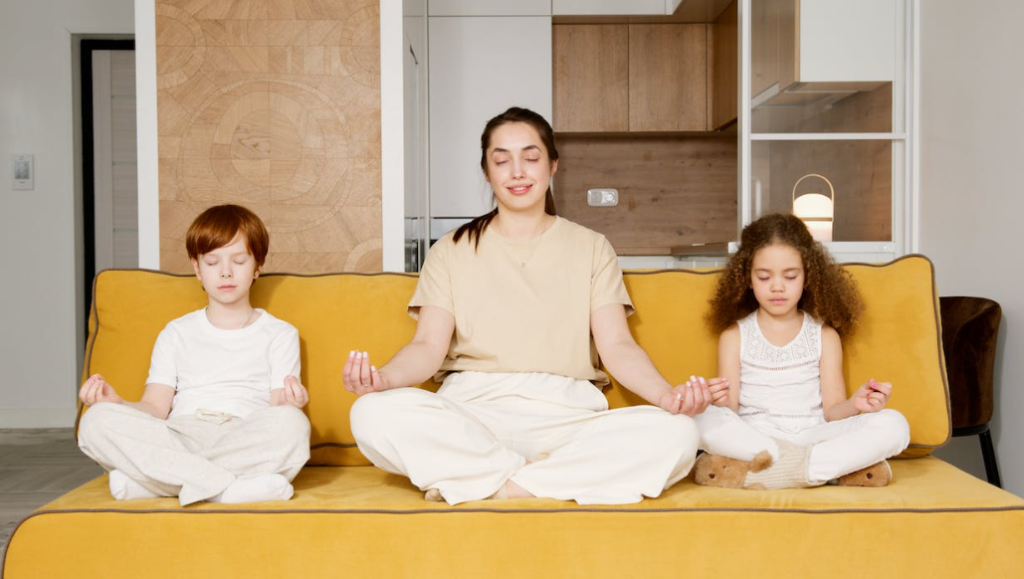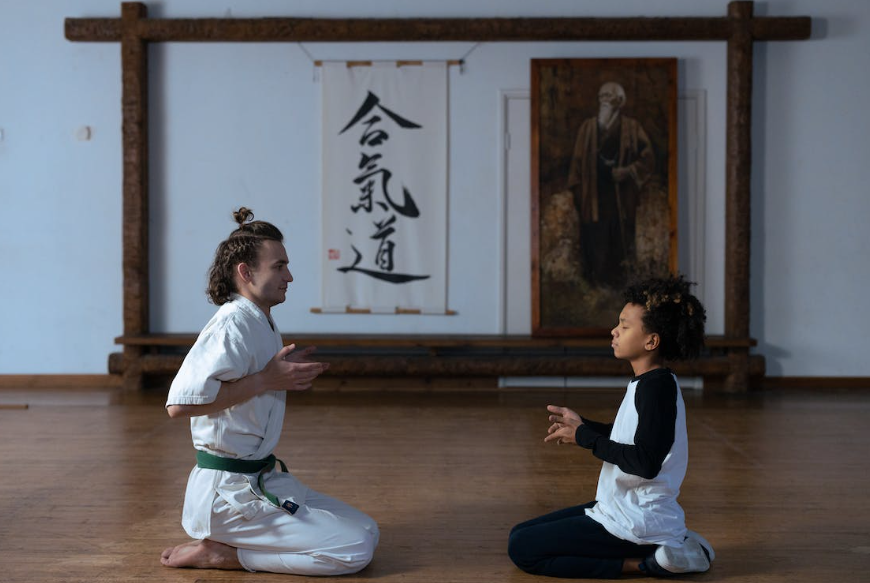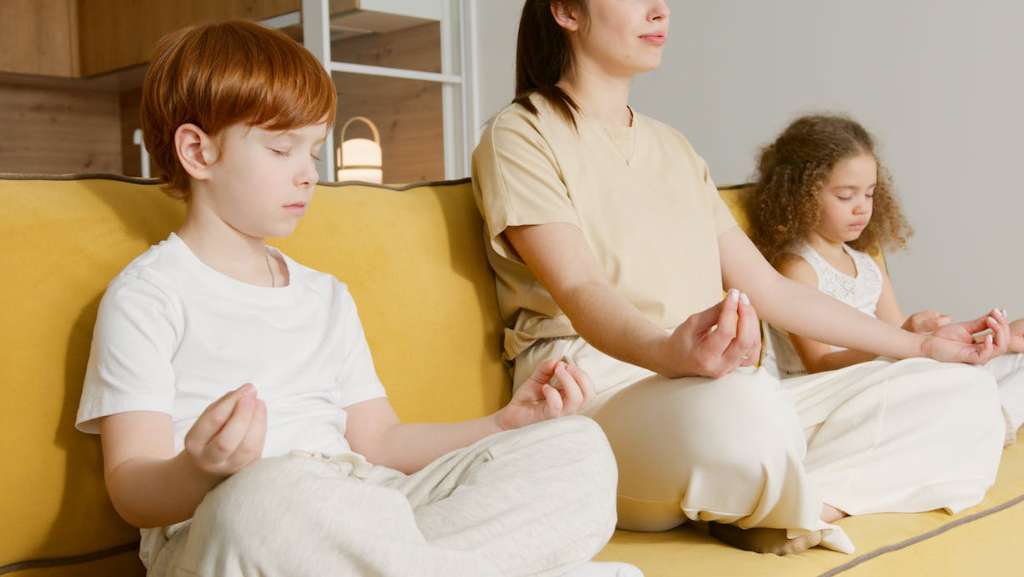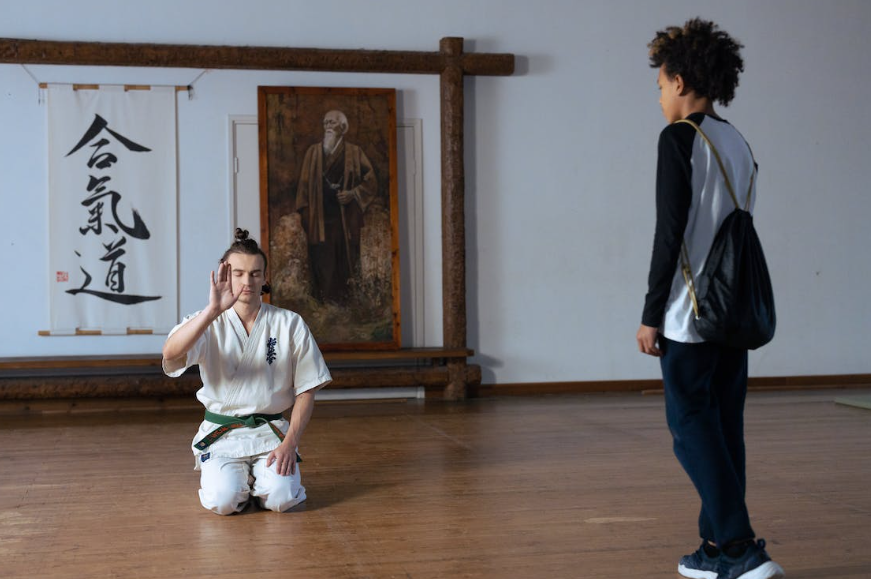How Mindfulness Can Help A Child
Here, we offer basic tips for children and adults of all ages, as well as several activities that develop compassion, focus, curiosity and empathy. And remember, mindfulness can be fun.

Selfpause Affirmation App
Download the app to get 1,000’s of affirmation meditations and everything you need to write, record and listen to your own.
Mindfulness is a practice that can be very beneficial to children and teens. It encourages them to slow down, focus on something, and breathe in the present. Children and teens who practice mindfulness find that it is calming and stress-free. Mindfulness meditation generally involves breathing exercises, body awareness, and visualization.
Mindfulness meditation

Mindfulness meditation can help a child deal with a variety of issues. For example, kids may feel inadequate due to bullying or being teased. Most adults’ insecurities were first experienced in childhood, and meditation can help build a child’s sense of security, empathy, inner stability, joy, and confidence. Meditation teaches kids to stay in the moment, instead of worrying about the future.
Mindfulness is useful for children at all stages of development. It helps kids cope with difficult situations while decreasing their anxiety. Children who practice mindfulness also become more accepting of their current situation, allowing them to cope more easily with their emotional challenges. This helps them grow up with better self-regulation skills and a greater appreciation for life.
Parents can begin teaching their child about mindfulness while they engage in daily activities. Infant massage is an excellent way to start this daily practice. Start with gentle pressure on the belly and work your way up to the rest of the body. It is best to do this slowly and calmly, paying close attention to the baby’s reactions.
Mindfulness practices are especially useful for children who have experienced traumatic experiences. It can help them deal with frustration by helping them to focus on something rather than dwelling on their past and worrying about the future. The more often a child practices mindfulness, the more adept they will be. This is especially important during childhood and adolescence, as these two stages are crucial in a child’s development. The experiences experienced during these years lay the foundations for their mental health later in life.
Various types of meditation can help a child cope with their emotions. For example, children can practice meditation exercises by focusing on their breaths. They can also focus on their feelings and sensations around them.
Group mindfulness activities

Group mindfulness activities can help a child become more aware of their surroundings. For example, kids can practice sitting in a comfortable position and observing their breath. A walk outdoors is also a good activity to promote mindfulness. Be sure to pack healthy snacks and keep hydrated. Using a mindfulness activity to teach children how to be aware of their thoughts and feelings is beneficial for them in many ways.
Walking in nature is an excellent group mindfulness activity that can help children get outside and connect with nature. Taking a walk in the park is a great way to practice mindfulness. Take the time to notice the sounds of nature and the surrounding area. If you can, have the child listen to a bell as the group walks.
Another activity that is a great way to help a child practice mindfulness is playing a game. Make it fun for kids by playing a game where the children have to identify what sounds are different. Another activity is jumping jacks. This helps kids focus on their breath. It is also a great way to help a child get some rest.
Children can also do a breathing exercise together. The breath helps to calm the mind and puts a child in a peaceful state. While journaling might be too advanced for young children, a gratitude exercise can help develop a mindfulness routine. A child’s gratitude can be expressed through art or words.
Another activity that can teach kids how to practice mindfulness is to create a self-portrait. They can make their picture out of different things, including rice and other items. This activity allows them to be more creative and think more quickly. By doing this, they will be better able to adapt to situations and deal with their emotions.
Self-regulation

Self-regulation and mindfulness are a two-pronged approach that can help children learn how to control their emotions. These techniques focus on helping children learn how to relax and calm themselves when they are experiencing a stressful situation. Parents can model self-regulation for their children by remaining calm and in control of their own emotions. They should also be patient with their children, especially those with behavioral challenges.
Children with self-regulation skills are better equipped to handle big emotions and cope with change. They are able to do well in school and with friends, and they also feel better about themselves. By helping a child develop these skills, parents can ensure that they have the tools they need to succeed in school and beyond.
Children who struggle with self-regulation often experience behavioural and social challenges. Lack of self-regulation skills makes it difficult for a child to follow instructions, cope with schoolwork, and get along with others. Researchers have attempted many interventions to help young children develop self-regulation skills. Fortunately, they have found that positive role models and self-regulation strategies can be helpful for a child’s development.
Children who are unable to regulate their emotions can be helped by engaging in play. Pretend play provides a safe environment for children to practice their mental skills. Play allows children to explore their emotions, organize them, and plan their actions. It also gives them a chance to practice their problem-solving skills.
Teaching a child self-regulation skills is a great way to help a child become an independent, healthy adult. Self-regulation skills can also help kids complete chores and make responsible decisions when they are out with friends. It can also help them stop breaking rules and work through challenges.
Learning to be in the present
Learning to be in the present helps a child focus and become more aware of the moment. Children can become aware of their own thoughts, which can be beneficial if it is possible to identify the root cause of these thoughts. They can also practice mindfulness throughout everyday activities. A child who learns to be mindful can connect with others better.
Managing emotions

A recent study evaluated the benefits of mindfulness for children, and found that children’s self-reported wellbeing and ability to regulate their emotions significantly improved. The researchers found that the mindfulness programme was easy to deliver in schools, and most children participated enthusiastically. It also significantly improved the child’s overall wellbeing, as measured by a range of measures, including life satisfaction, self-belief, and optimism.
Children are increasingly exposed to high levels of stress, which is partly due to a fast-paced lifestyle, academic pressures, and less time spent in nature. This stress activates the release of stress hormones, which trigger a protective response. Mindfulness exercises, on the other hand, can help children shift from the sympathetic nervous system to the parasympathetic nervous system, which regulates the breath, heart rate, and blood pressure. By practicing mindfulness, children become more aware of the present moment and feel less pressured by their emotions.
Mindfulness can also help a child recover from trauma. Often, children who have experienced trauma are stuck in a survival mode and unable to develop higher-level skills. Mindfulness can help children learn to focus on one thing and live in the present moment, which can provide a sense of safety and help them overcome their fears.
Mindfulness is a widely praised practice for its ability to reduce stress and anxiety. It has made its way into classrooms across the country, and many schools are incorporating it as part of their daily rituals. In addition to helping children cope with stress and anxiety, mindfulness can also help children practice higher-level learning skills and improve their academic performance.
One such program, called Mindfulness in Early Childhood, has been widely implemented. A recent survey of practitioners showed that mindfulness can help a child develop self-regulation, improve attention, and be more patient. It can also help a child develop empathy and compassion, which can help them cope with a variety of situations.
Our Top FAQ's
Mindfulness practices can have a number of benefits for children’s physical and mental health. These practices can help children to:
- Reduce stress and anxiety
- Improve concentration and focus
- Enhance emotional regulation and self-control
- Promote relaxation and calmness
- Improve sleep quality
- Reduce symptoms of depression and other mental health conditions
There are many different mindfulness exercises that can be used with children, and the best one for a particular child will depend on their age and interests. Some simple mindfulness exercises that may be helpful for children include:
-
Deep breathing: Encourage children to take slow, deep breaths in through their nose and out through their mouth.
-
Body scan: Have children lie down and focus on each part of their body, starting at their toes and working up to their head. As they focus on each part of their body, have them take a deep breath in and out.
-
Sensory awareness: Have children focus on one of their senses (e.g., sight, sound, taste, touch, or smell) and pay attention to the sensations they are experiencing.
-
Guided meditation: Use a recorded meditation or guide children through a meditation where they imagine being in a peaceful place, such as a beach or a forest.
To encourage children to engage in mindfulness activities, it can be helpful to:
-
Set aside dedicated time for mindfulness practice. This could be a few minutes every day or a longer session once a week.
-
Make mindfulness practice fun and interactive. Children may be more likely to participate if the activity is engaging and enjoyable.
-
Use age-appropriate resources and activities. There are many books, apps, and other resources available specifically designed for children and mindfulness practice.
-
Practice mindfulness yourself and model the behavior you want to see in your child. Children are more likely to engage in mindfulness activities if they see their parents and caregivers doing the same.
Mindfulness can be incorporated into a child’s daily routine in a number of ways. Some ideas include:
-
Practicing mindfulness as part of a daily routine, such as before meals or bedtime.
-
Using mindfulness as a transition activity, such as between activities or when transitioning from one environment to another.
-
Incorporating mindfulness into daily activities, such as taking a mindful walk or focusing on the present moment while playing a game.
-
Encouraging children to take breaks throughout the day to practice mindfulness, such as during a study break or after a sports practice.
Yes, mindfulness practices can be very helpful in helping children cope with stress and emotions. These practices can help children to:
- Recognize and name their emotions
- Develop strategies for managing and regulating their emotions
- Build resilience and cope with stress in a healthy way
By regularly practicing mindfulness, children can become more aware of their thoughts and emotions and learn how to manage them in a healthy way. This can be especially helpful for children who struggle with stress, anxiety, or other emotional challenges.
